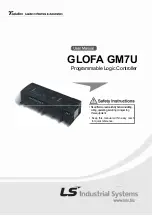
7-3
Cisco Wireless LAN Controller Configuration Guide
OL-8335-02
Chapter 7 Controlling Lightweight Access Points
Lightweight Access Point Overview
Cisco 1030 Remote Edge Lightweight Access Points
The only exception to the general rule of lightweight access points being continuously controlled by
Cisco Wireless LAN Controllers is the Cisco 1030 IEEE 802.11a/b/g remote edge lightweight access
point (Cisco 1030 remote edge lightweight access point). The Cisco 1030 remote edge lightweight
access point is intended to be located at a remote site, initially configured by a Cisco Wireless LAN
Controller, and normally controlled by a Cisco Wireless LAN Controller.
However, because the Cisco 1030 remote edge lightweight access point bridges the client data
(compared with other Cisco 1000 series lightweight access points, which pass all client data through
their respective Cisco Wireless LAN Controller), if the WAN link breaks between the Cisco 1030 remote
edge lightweight access point and its Cisco Wireless LAN Controller, the Cisco 1030 remote edge
lightweight access point continues transmitting wireless LAN 1 client data through other Cisco 1030
remote edge lightweight access points on its local subnet. However, it cannot take advantage of features
accessed from the Cisco Wireless LAN Controller, such as establishing new VLANs, until
communication is reestablished.
The Cisco 1030 remote edge lightweight access point includes the traditional SOHO (small office, home
office) AP processing power, and thus can continue operating if the WAN link to its associated Cisco
Wireless LAN Controller fails. Because it is configured by its associated Cisco Wireless LAN
Controller, it has the same wireless LAN configuration as the rest of the Cisco Wireless LAN Solution.
As long as it remains connected to its Cisco Wireless LAN Controller, it varies its transmit power and
channel selection under control of the RRM, and performs the same rogue access point location as any
other Cisco 1000 series lightweight access point.
Note that the Cisco 1030 remote edge lightweight access point can support multiple wireless LANs while
it is connected to its Cisco Wireless LAN Controller. However, when it loses connection to its Cisco
Wireless LAN Controller, it supports only one wireless LAN on its local subnet.
Figure 7-2
shows a typical Cisco 1030 remote edge lightweight access point configuration:
Figure 7-2
Typical 1030 Lightweight Access Point Configuration
















































